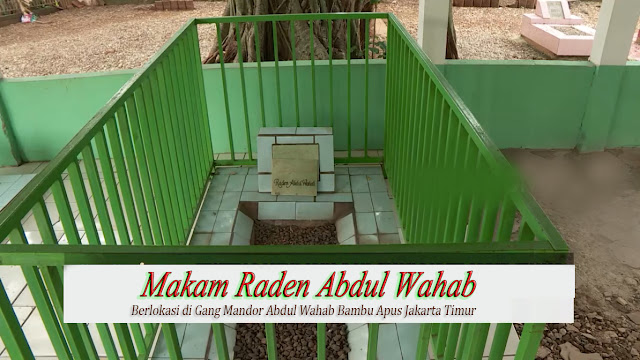Bambu Apus Village is one of 8 Villages located in the Cipayung District, East Jakarta Administrative City, and is demographically located in the Eastern region of DKI Jakarta.
This area is directly bordered by Lubang Buaya Village to the north, Ceger Village to the west, Setu Village to the east, and Cipayung Village to the south.
Zaenuddin HM, explains in his book 212 Origins of Djakarta Tempo Doeloe, 377 pages thick, published by Ufuk Press in 2012, that Bambu Apus is taken from the name of a type of bamboo tree. That said, in that area, there used to grow a kind of bamboo tree called Bambu Apus, with the characteristics of a straight stem, not thorns, and relatively large leaves.
From various people, there are those who argue that the area is overgrown with rope bamboo or apus bamboo, while other opinions come from a legend about a young man who is an expert in worship who has strange healing powers when bathing on the banks of a river. local people called Mupus, only his clothes were still left lying on the banks of the river.
The Bambu Apus area was once famous for its haunted and deserted area, its infrastructure was still limited with makeshift roads, Bambu Apus is not a new place name but has existed since the Dutch colonial era, it's just that the location is in a remote place and is not listed on the Dutch colonial map hence Bambu Apus is less well known. The bamboo forest area which is close to the river is so haunted that it is known as Jin banishing its children.
As a quiet and scary suburb, the Bambu Apus area is known to be haunted and prone to crime. It is unknown how many victims died because of the ferocity of thieves and robberies in Bambu Apus.
Bambu Apus was then shunned, and the Dutch colonial troops did not even dare to linger in the area until finally, migrants from Banten and Cirebon who were famous for their kanuragan knowledge came to trade in Batavia, some decided to build settlements in the Bambu Apus area, to lead the community. he chose a village head called Mandor, a descendant of Banten nobles named Raden Abdul Wahab, then he was appointed as the first Bambu Apus village head.
According to Mr. Sudirman's narrative, the genealogy of Raden Abdul Wahab's parents was named Raden Abdul Hanan Hidayah Jonggol West Java, then traced again, who at that time had been assisted by the structure of the Banten cultural service, there was a reference that Raden Abdul Hanan had parents named Syaikh Maulana Malik Saifuddin in Pandeglang, Banten, then the parents of Shaykh Maulana Malik Saifuddin namely Prince Muzaki in Citeurep Bogor. Where Prince Muzaki actually has 4 (four) names which include Prince Muzaki and Eyang Sake, meaning Grandmother Sake is called Grandmother for parents and Sake is a drinking bowl made of bamboo.
Under the leadership of Raden Abdul Wahab who was highly knowledgeable, the Bambu Apus area was gradually becoming more and more crowded with residents. For their livelihood, they worked the rice fields and raised goldfish, and the criminals who often acted in Bambu Apus did not dare to show themselves anymore, they did not want to deal with the Banten champions led by Foreman Abdul Wahab.
The Bambu Apus people feel more at home living in an area close to the river, especially as the head of the village Raden Abdul Wahab cares about his people, he often even helps pay off taxes collected by the Dutch government.
Once upon a time, Raden Abdul Wahab had a unique habit with his people, he liked to wear fragrances sourced from the tuberose flower, occasionally he asked permission to take the tuberose flower, and out of nowhere got it when he returned Raden Abdul Wahab was already bringing the fragrant tuberose flower and fragrant, even though in the village of Bambu Apus no one grows tuberose flowers.
The ancestral grave of the Bambu Apus village community is located in Gang Mandor Abdul Wahab Bambu Apus, East Jakarta, right under an old banyan tree hundreds of years old which was planted on the orders of Raden Abdul Wahab. contemplation to hone inner sensitivity, Strangely the roots of the banyan tree did not damage Raden Abdul Wahab's tomb in the slightest, even though the surrounding graves had been damaged by the roots of the banyan tree.
Although the tomb of Raden Abdul Wahab is not very widely known by the community pilgrims, many pilgrims visit this tomb for their own purposes. some have even seen apparitions of the figure of Raden Abdul Wahab, of course, this brings a different experience for the pilgrims.






0 komentar:
Post a Comment